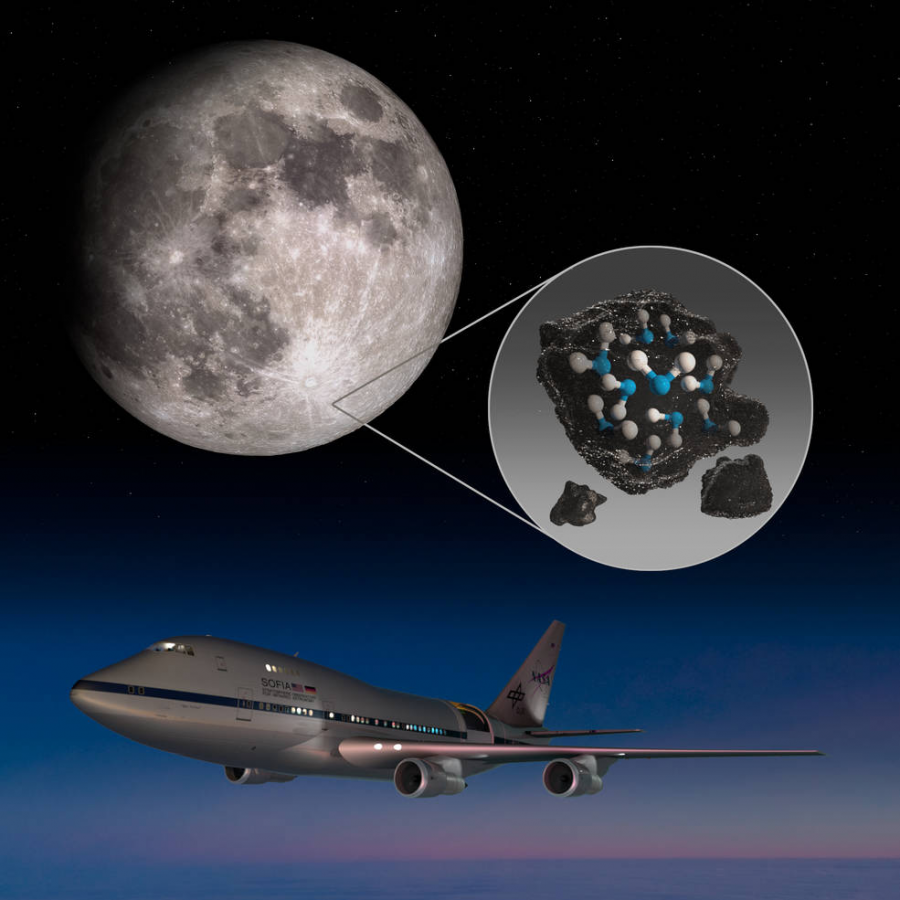A New Discovery: Water on the Surface of the Moon
Photo courtesy NASA
Since the return of the Apollo astronauts in 1969, the Moon has been thought to be dry land. There was never confirmed evidence of water or ice existing in the sunlit parts of the Moon until now. It was recently discovered that at the Moon’s poles, shadowed craters contain large deposits of ice. A recent study suggests that the ice deposits may cover an area the size of Connecticut and Massachusetts combined.
Testing its new data collector, NASA deployed a modified Boeing 747SP equipped with a 2.7-meter infrared telescope. On this mission, NASA scanned for infrared light emitted by water molecules. While this was simply a test flight, the results NASA obtained from the Boeing were astounding. On October 26, NASA’s Stratospheric Observatory for Infrared Astronomy(SOFIA) confirmed that there are water molecules on the sunlit portions of the Moon. The Clavius Crater, one of the largest craters visible from Earth, contains a form of hydrogen, which scientists suspect to be water.
Casey Honniball, a scientist at NASA’s Goddard Space Flight Center, found, along with numerous other researchers, that for each kilogram of lunar soil in the areas they scanned, there were about 100 to 400 milligrams of water. They reported that almost all of the water they discovered was trapped between grains of lunar soil.
“We had indications that H2O —the familiar water we know— might be present on the sunlit side of the Moon,” said Paul Hertz, director of the Astrophysics Division in the Science Mission Directorate at NASA Headquarters in Washington.
New questions are raised from this discovery: How did the water get to the Moon’s surface, and what is keeping the molecules there? “Without a thick atmosphere, water on the sunlit lunar surface should just be lost to space,” claims Casey Honniball.
According to NASA, a possible explanation is that micrometeorites striking the lunar surface carry small amounts of water, which is then deposited upon impact. Another possibility is that the Sun’s solar winds carry hydrogen to the lunar surface, which causes a chemical reaction with the lunar soils, creating hydroxyl. Hydroxyl, a chemical similar to water, is then transformed into the water from radiation emitted by micrometeorites. The water molecules are trapped in the special structures of lunar soil, formed after a micrometeorite strike.
While this discovery seems to have little impact on Earth’s current state, water on the Moon can be useful for more than just drinking. NASA has planned to send astronauts to the Moon in 2024 to establish an outpost. With the discovery of water molecules, scientists can split the water into hydrogen and oxygen, creating ingredients for rocket fuel and breathable oxygen respectively. This marks an enormous step towards the mission of setting up an outpost on the Moon. In fact, last month, NASA selected the company, Intuitive Machines of Houston, to deliver a drilling machine to the Moon, in hopes of harvesting ice and water from its surface. Eventually, with an established lunar outpost, the ability to travel to Mars. While this may seem like a small discovery, the potential uses and benefits we reap from water on the Moon are invaluable.

Grade: 12
Years on Staff: 3
Why are you writing for the Flintridge Press?
I want to use my affinity for writing in the Press to spread information...










